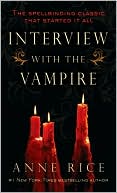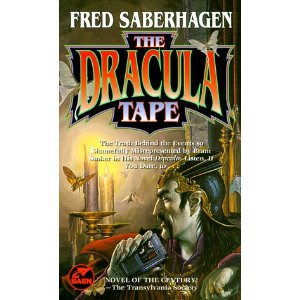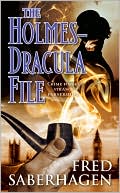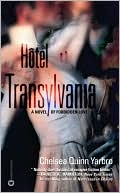There are a lot of songs and stories that ride to the city of New Orleans, including the famous one about the train. In Steve Goodman‘s classic, covered by Arlo Guthrie, Willie Nelson and a host of others, the train doesn’t actually arrive by the time the song ends. It’s going to get there “by morning.”
Whenever a story is set in New Orleans, the city is more than just the setting, it’s also a character. Anyone who has been mesmerized by Louis’ story in Anne Rice’s Interview with the Vampire will attest to that. There is no place in America with the cultural gumbo of history that would otherwise be able to make Louis’ and Lestat’s story fascinate the reader.
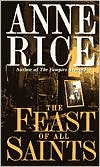 But Anne Rice‘s love affair with New Orleans is reflected in some of her other work. One of her earliest stand alone novels is The Feast of All Saints. The story is about the gens de couleur libre, the free people of color who lived in New Orleans before the Civil War. It is a society that seems uniquely part of New Orleans history, and that most people know nothing about. The writing is as compelling as Interview, but what fascinates is how fragile the world of the gens de couleur was. Everything existed on sufferance, and when that sufferance was strained or torn, disaster struck.
But Anne Rice‘s love affair with New Orleans is reflected in some of her other work. One of her earliest stand alone novels is The Feast of All Saints. The story is about the gens de couleur libre, the free people of color who lived in New Orleans before the Civil War. It is a society that seems uniquely part of New Orleans history, and that most people know nothing about. The writing is as compelling as Interview, but what fascinates is how fragile the world of the gens de couleur was. Everything existed on sufferance, and when that sufferance was strained or torn, disaster struck.
Part of what makes New Orleans such a unique part of America is the different cultures that have held sway over that port city. The French, then the Spanish, back to the French and finally the relatively new American Republic bought the Louisiana Territory from Napoleon in 1801. When the U.S. took over New Orleans, there was a clash of cultures between the planters and the new Americans who came to the city and the Territory. Culture clashes make for great stories.
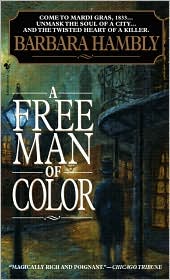 Barbara Hambly’s historical mystery series is set at the time of that cultural clash. Benjamin January returned to New Orleans from Paris in 1833, after the death of his wife. Ben January trained as a surgeon in Paris, but he makes his living as a piano player in New Orleans. Why? Because he is A Free Man of Color, as the title of the first book in the series names him. He can only practice medicine during the annual cholera epidemic, when most of the white doctors flee the city. But January’s insider/outsider perspective allows him to see into the heart of what is unsaid in every facet of New Orleans society. The new Americans, particularly one policeman, discover that his ability to see into all parts of Creole society, areas that the Americans have no entry into, may be useful in solving crime. But it’s the view into Benjamin’s world that is compelling. The latest book in this series, The Shirt on his Back, just came out in June.
Barbara Hambly’s historical mystery series is set at the time of that cultural clash. Benjamin January returned to New Orleans from Paris in 1833, after the death of his wife. Ben January trained as a surgeon in Paris, but he makes his living as a piano player in New Orleans. Why? Because he is A Free Man of Color, as the title of the first book in the series names him. He can only practice medicine during the annual cholera epidemic, when most of the white doctors flee the city. But January’s insider/outsider perspective allows him to see into the heart of what is unsaid in every facet of New Orleans society. The new Americans, particularly one policeman, discover that his ability to see into all parts of Creole society, areas that the Americans have no entry into, may be useful in solving crime. But it’s the view into Benjamin’s world that is compelling. The latest book in this series, The Shirt on his Back, just came out in June.
 For a different perspective on historic New Orleans, David Fulmer‘s Chasing the Devil’s Tail takes place during a different clash. His Valentine St. Cyr is a private detective in the fabled Storyville district in the early 1900s. He investigates the death of a musician just at the point when the blues was giving birth to jazz.
For a different perspective on historic New Orleans, David Fulmer‘s Chasing the Devil’s Tail takes place during a different clash. His Valentine St. Cyr is a private detective in the fabled Storyville district in the early 1900s. He investigates the death of a musician just at the point when the blues was giving birth to jazz.
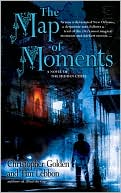 Katrina also gets its due. In The Map of Moments by Christopher Golden and Tim Lebbon, a history professor receives a map of New Orleans. But it isn’t just a map of streets and tourist destinations. It’s a map of historical moments. And if the professor can manage to visit all of the “moments” and do all of the right things, he can undo the biggest mistake of his life–leaving his lover to die amid the devastation that Katrina made out of New Orleans.
Katrina also gets its due. In The Map of Moments by Christopher Golden and Tim Lebbon, a history professor receives a map of New Orleans. But it isn’t just a map of streets and tourist destinations. It’s a map of historical moments. And if the professor can manage to visit all of the “moments” and do all of the right things, he can undo the biggest mistake of his life–leaving his lover to die amid the devastation that Katrina made out of New Orleans.
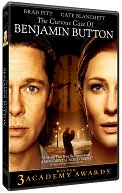 F. Scott Fitzgerald’s story, The Curious Case of Benjamin Button, about a man who was born old and lived backwards, was originally set in Baltimore. Made into a movie post-Katrina, it was set in New Orleans, using the oncoming storm as an integral part of the frame. The story as written is quite short, and available free at Project Gutenberg. The movie was much greater than the sum of its original parts.
F. Scott Fitzgerald’s story, The Curious Case of Benjamin Button, about a man who was born old and lived backwards, was originally set in Baltimore. Made into a movie post-Katrina, it was set in New Orleans, using the oncoming storm as an integral part of the frame. The story as written is quite short, and available free at Project Gutenberg. The movie was much greater than the sum of its original parts.
The lyrics in my head are from an old rock classic by Poco, Heart of the Night. Something about the words and the music still evoke New Orleans for me. The song compares an ex-lover to the city on Lake Pontchartrain. And as the song rightly says, “she’s so full of surprises”. She’s always been full of stories, too.

